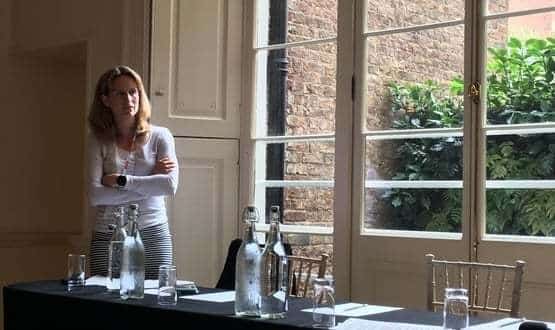Child Protection Information Sharing delays roll-out deadline
- 13 July 2017

The national child protection data sharing scheme has revised its delivery plans after facing funding and technical issues.
NHS Digital’s board papers show that the Child Protection – Information Sharing (CP-IS) has pushed back its original target dates by a year.
The CP-IS is a project that links information about vulnerable children between social care and unscheduled NHS care settings via the NHS Spine, specifically alerting clinicians if a child is subject to a child protection plan.
The 3 May board papers say that the originally plan was to have 80% of local authorities live with CP-IS and 80% of local integration of the CP-IS system within the NHS by 31 March 2018
However, the revised timetable says by March 2019, 90% of local authorities will be live with the CP-IS, and only 65% of local authorities live in March 2018.
The latest set-back comes after time lines had previously been re-set in February last year, when a March 2018 deadline for the roll-out was named, after most local authorities missed the original December 2015 target.
A spokeswoman for NHS Digital said that: “Revising the timetable for delivery was necessary to recognise the work that each of these organisations has to do in order to implement CP-IS and to maximise uptake of the system.”
“We continue to work with and support local authorities, NHS trusts and IT systems suppliers across England to ensure the implementation process moves as swiftly and efficiently as possible.”
The board papers say challenges to the roll-out include:
- Insufficient funding
- Early technical challenges, for example the requirement to have an N3 connection
- It’s the first time NHS Digital engaged with social care suppliers and local authorities in many cases
- Underestimation of time taken for software suppliers to develop solution and gain accreditation
NHS Digital’s May board papers say current challenges with deployment include availability of software accredited with CP-IS and co-ordination of local authorities and NHS sites to go live in similar time frames.
The board papers say that by “summer 2016, it was clear that the project was failing to achieve these targets and would struggle to meet them ongoing”.

At the King’s Fund’s Digital Health and Care Congress 2017 on 11 July, Eve Roodhouse, NHS Digital’s programme director for CP-IS, described the project as “fundamentally important”.
“In my view, it’s inexcusable that we haven’t yet got this into every care setting”, she said.
“[It’s] paved the way really for other interactional work we do with local authorities as we go forward”.
She said that currently 75,000 children are protected by CP-IS, 40% of local authorities are live (60 in total) and 20% of healthcare organisations are live (60 in total), with 1,500 alerts a month.
CP-IS works as an information feedback loop. The social care details are extracted to NHS Spine via the NHS number, and if a child presents at unscheduled setting an alert is set off. The healthcare team is then given social care details and the child’s last 25 presentations at unscheduled care, and then the social team is notified that the child was seen by healthcare team.
NHS England is funding the project, and the total expenditure of 31 March 2017 is £5.8 million. The funding has been extended to 31 March 2018, at an expected cost of £2.1 million.
The CP-IS project was launched by the Department of Health in December 2012, in response to high profile cases where lack of information sharing contributed to child tragedies.
Roodhouse said that “poor communication in information sharing between agencies is identified as a factor in the majority of serious case reviews around the death or an injury of a child”.
The NHS and local authorities have been trying to set up an information sharing system for years, following the horrific abuse and murder of eight-year-old Victoria Climbie at the hands of her guardians in 2000. Her death sparked an inquiry, that highlighted failings in information sharing between agency and recommended widespread changes.
However, the first attempt to achieve this, ContactPoint, was dogged by concerns about its scope, security and discrimination of already disadvantaged children. It was scrapped in 2010 by the new coalition government and CP-IS was eventually proposed as a scaled back solution to sharing information between health and social care.
Benefits to the project, listed in the board papers, include early intervention, improved safety and care and increased workforce efficiency and effectiveness.





9 Comments
get suspected child abuse on to a person pathway via an eReferral as quickly as possible, paper is out of data the moment it is printed and is far to easy to dispise of, NHS Digital need more techies who can get things done and not just talk about getting IT done, NICE publish a visualisation “suspected child abuse”, time for cultural change (CC) within social care and ourNHS … now
Yes you are describing the process and CPIS is a central registry of child protection CarePlans and should be populated as part of the pathway process (following a referral) when the CarePlan is created.
One thing we noticed is this CarePlan registry works well if it follows the (trust) safeguarding process, so CPIS CarePlan is detected, clinician (or TIE) informs safeguarding, safeguarding contacts the relevant social services (and get the CarePlan if required, either verbally, mail or ideally electronically. I’d presume this is a legal safeguarding requirement) and takes appropriate action.
[One of the reasons I wrote this reply is this wasn’t initially apparent when we were working on the project. The full picture really helped in implementing the system and helped to us benefit care rather than provide an IT solution]
We (CareMotive) have implemented solutions for a number of LAs now for the purpose of looking up NHS #s in bulk and/or interactively; only two of the LAs had a direct N3 connection.
Hi Peter,
I only know of GCSX and London PSN interconnections to N3. Northants County Council use a GCSX to N3 interconnection, and LB Havering and LB Hackney use an N3 interconnection from the London PSN. The interconnections are available for all to use I believe.
The above connections don’t really relate to data sharing arrangements between the local Acute Trust and the LA, but they are enablers, and at least permit NHS #s to be obtained from the Spine via our SMSP, and thus CP-IS records can then be uploaded.
I hope this helps.
Paul
Many thanks for the information
Rgds
Access to N3 is permitted from GCSX and LPSN, so it’s not necessary for all LAs to have an N3 connection, but the point about PSN is well made.
Hi Paul
Please could you supply an example of an LA that has a PSN to N3 connection established in the last couple of years.
The only ones I’m aware of have had historically linked networks for decades and NHS Digital have never gone back to reaccredit them under the current regulations, or, they are an established single Health / Care trust where the Trusts and LA are a single data controller on a single N3 network.,
I have still yet to find a truly integrated care network or that includes a separate LA and NHS Trust environment where there are NHS numbers and health / care data flowing freely between the organisations.
Thee have been a number of issues faced in implementing this :
a) The exchange of NHS numbers to identify children which required a change in the law to allow it, there are still fundamental IG issues with the NHS releasing the NHS to LAs number for health / care purposes.
b) There are some 5 ways to exchange NHS number and connect to the NHS all of them bar one require the LA to have an N3 connection which is very expensive and not included in the funding from the NHS. The one option that does remain is “clunky”.
c) Support from the project on how to engage with NHS Digital on how to get an N3 connection was patchy and not technically informed
The concept of integration is still an anathema to NHS Digital the HSCN may solve some of these issues but until PSN accredited LA networks are allowed access to N3 and NHS IG allow a free flow of NHS numbers, for care purposes, this and other integration related STP projects will continue to be frustrated.
To be fair to the CPIS team, they’ve effectively been given the task of getting social services on N3. That is a a far bigger task than getting them to upload a CSv file to a website and provide an api for the NHS to use.
(Assume this also includes tracing the NHS numbers for this children – probably another huge task). Why isn’t NHS access that high? understand they may wait for local social services but this gives details on out of area children – something they wouldn’t have had before (and wouldn’t have known about)
One small point: it doesn’t have a record of unscheduled care attendance – it has an audit of record access (which may imply unscheduled care attendance).
Comments are closed.